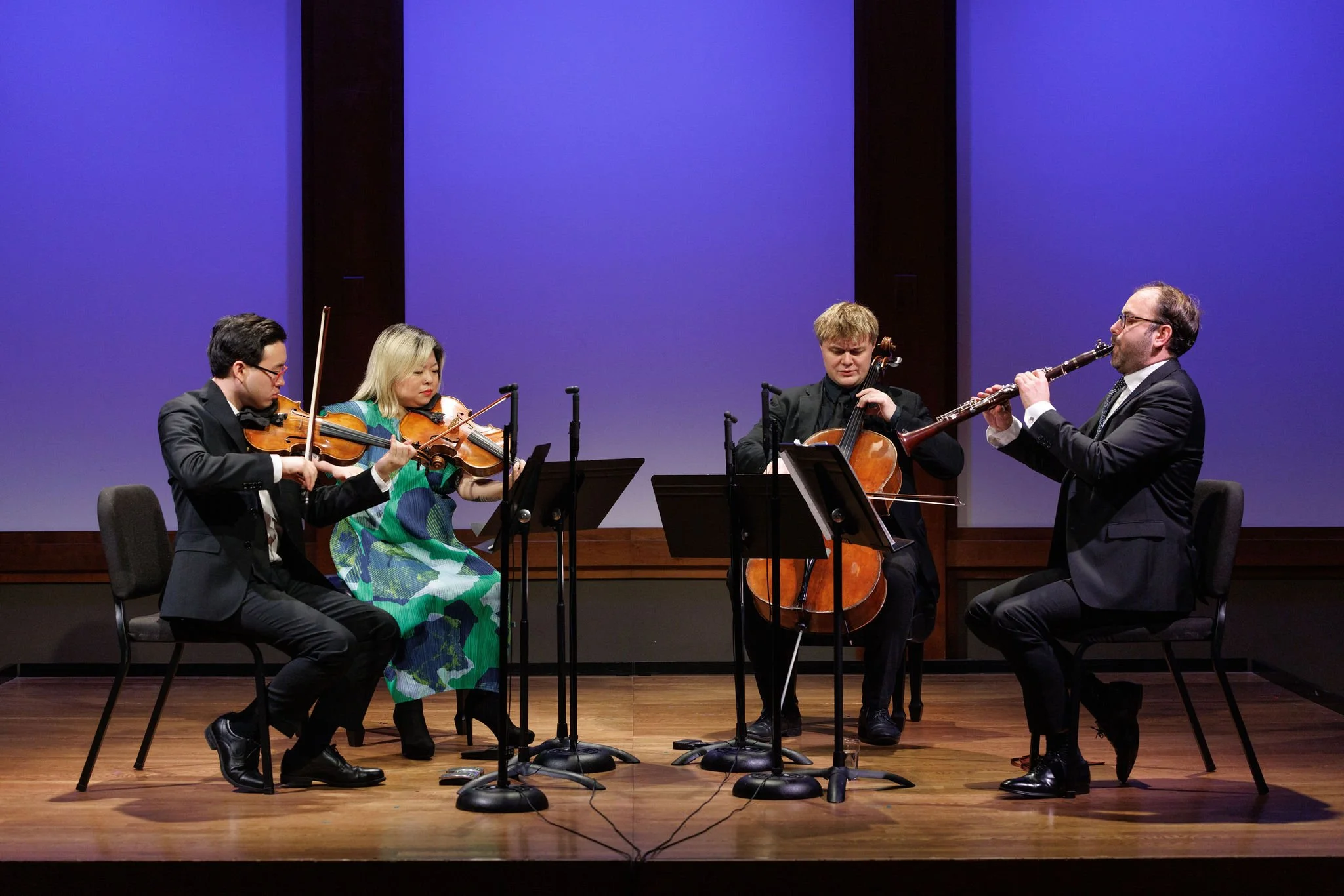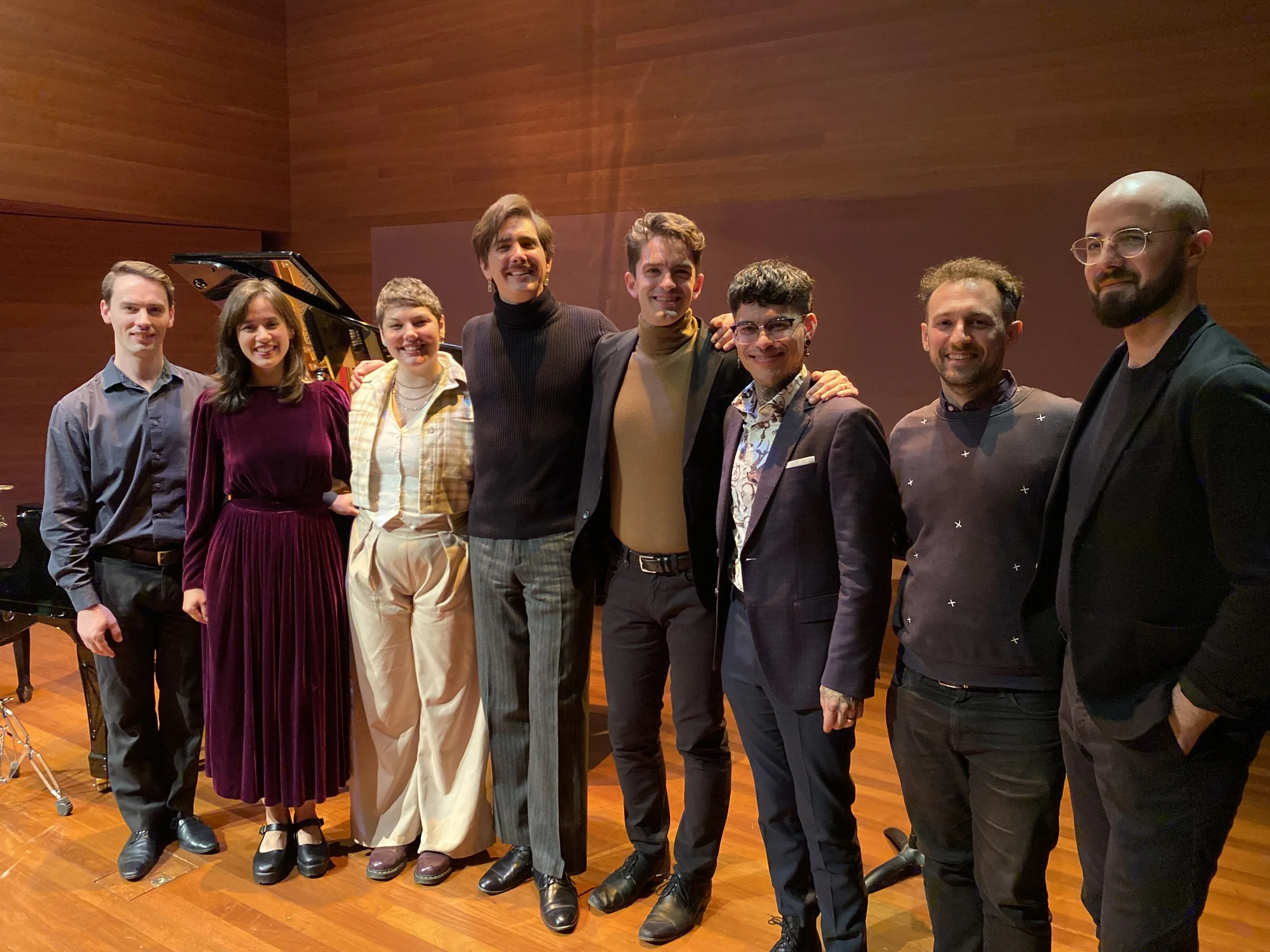REVIEW: Hummel and Prokofiev in CMS Rose Studio
Above photo by Da Ping Luo.
October 31, 2024
Robert Caro, in the first pages of The Power Broker: Robert Moses and the Fall of New York, writes of “five immense dingy white expanses of travertine that are Lincoln Center, the world’s most famous, costly, and imposing cultural complex.” Travertine may have gone out of style, but the sheer number of performing venues tucked into those expanses is indeed imposing. Ten floors up, in a tower nestled next to The Juilliard School, is one of the most intimate: the Daniel and Joanna S. Rose Studio at Chamber Music Society of Lincoln Center.
CMS invites audiences to this petite slice of heaven (the venue seats about a hundred people) for various events, from Inside Chamber Music lectures (with Bruce Adolphe) to concerts and masterclasses. Thursday’s Rose Studio Concert, hosted and curated by oboist James Austin Smith, was an enchanting, hour-long holiday.
I had come to associate the composer Johann Nepomuk Hummel exclusively with one piece: his Trumpet Concerto in E Major, de rigueur for trumpet students, usually heard in E-flat instead, and with piano accompaniment. The late Classical-era keyboard virtuoso and composer — pupil of Mozart and Haydn, friend of Beethoven and Schubert — deserves rediscovery. Hummel’s Quartet in E-flat Major for Clarinet, Violin, Viola, and Cello, penned in 1808, started that excavation with a vivacious performance by clarinetist Tommaso Longuich, Julian Rhee (violin), Yura Lee (viola), Jonathan Swensen (cello).
Hummel, portrait by Joseph Willibrord Mähler, around 1814.
Hummel’s four movement quartet proved surprisingly entertaining, and like a corps de ballet executing choreography, CMS’s instrumentalists danced around each other, and lifted each other up. Longuich’s ruddy tone and agile articulation anchored the flowing first movement, Allegro moderato. The strings operated as an organism, connecting on a palpable level in the swirling, burbling textures.
The sinister second movement, called La Seccatura (which refers, Smith endearingly explained in his introductory remarks, to a nuisance, or party pooper), plays a joke on the musicians, whose parts are notated in conflicting time signatures:
The satisfying finale, a rustic and sunny Rondo Allegretto was buoyed by viola and cello chasing each other in busy, joyful runs that fizzed beneath the melody like champagne bubbles. But the extraordinary slow movement, Andante, was the emotional highlight of the hour. The four voices play equal roles in this sublime, yearning minuet hailing from the parallel universes of Mozart’s comic operas and Beethoven’s Late Quartets.
Rose Studio Concerts present two performances of each program, 6:30 and 9pm (there is no intermission). So, with the energy in the room primed, a change of personnel segued directly to Sergei Prokofiev’s Quintet in G Minor for Oboe, Clarinet, Violin, Viola, and Bass, Op. 39.
Smith assumed oboe duties after explaining the fascinating origins of the rarely heard Prokofiev suite written for the unprecedented combination of oboe, clarinet, violin, viola, and string bass. Essentially the score for a ballet commission, Prokofiev composed this in 1924 while living abroad in Paris, circling the orbit of Diaghalev and Stravinsky. The Boris Romanov ballet, called Trapèze, was set in the circus, and Prokofiev’s music — published as a six-movement suite (prior to the ballet’s premiere and subsequent commercial failure) is adventurous, dense, and evocative — one of the 20th century’s greatest composers at the height of his inventiveness.
Photo by Da Ping Luo.
The CMS’s ensemble, now underpinned by the dexterous, expressive bass playing of Nina Bernat, stood in a half-moon and brought the angular, sensuous score to life with vivid tone painting and character. Smith’s focused, verdant oboe heralded like a master of ceremonies in the come hither first movement (Moderato). Longuich’s droll clarinet added dark commentary and Lee brought witty incisiveness to the viola’s leaping interjections. Rhee had a gleeful glint in his eye whenever leading a phrase in his role as concertmaster.
The quintet’s precise intonation sent Prokofiev’s acerbic, colorful harmonies levitating, Smith and Longuich nailed their tightrope walks high in the stratosphere. Bernat’s bass solo in the second movement, Andante energico, was elephantine, yet tender. The three string instruments sounded orchestral in thick passages of double-stops and expressionistic chords. The influence of Stravinsky pervades the thrilling drive of the third movement, Allegro sostenuto, ma con brio, and Prokofiev’s underrated ingenuity as an orchestrator are showcased in the wistful, murky night music of the Adagio pesante.
The edge-of-your-seat, action-packed climax Allegro precipitato, ma non troppo presto was riveting, and the bittersweet finale, Andantino, draws from the same inkwell that Prokofiev would later employ in his Fifth Symphony — melodic fragments haunted by psychological subtext, and a hint of wry fatalism.








